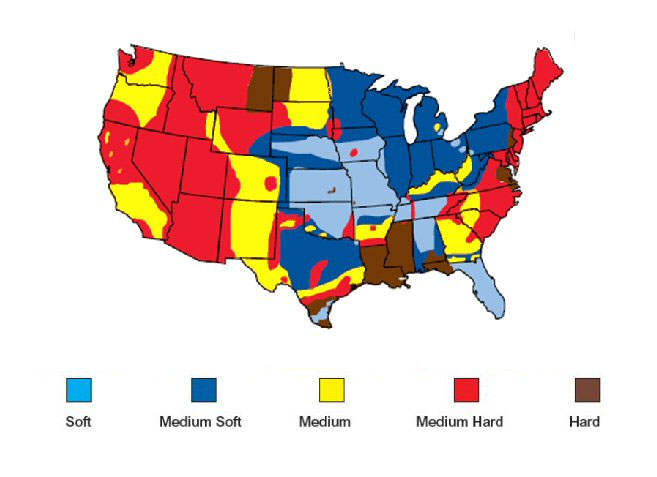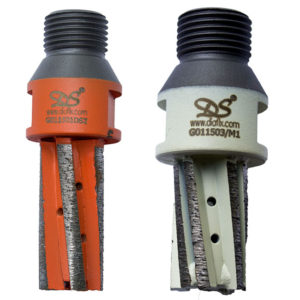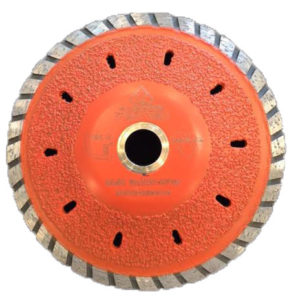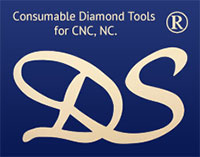Quite a few things can go wrong with your cutting blades. Use this guide to help you diagnose common problems.
First and foremost, always wear safety equipment and follow the manufacturer’s directions.
Segment Cracks
Origin : The blade is too hard given the material being cut.
Solution : Use a softer bond blade (see, What to consider before purchasing a blade)
Undercutting
Origin : wearing away of the steel center faster than the diamond segment.
Solution : Use a lot of water to flush out slurry during the cutting process.
Short Life
Origin : Blades are designed to cut specific materials resulting in the most economical use. General purpose blades may not be the right answer.
Solution : Choose a blade designed for specific material rather than general purpose.
Origin : Not enough water to the blade.
Solution : Roughly two gallons of water is required per minute to properly cool a blade. Make sure that the water hoses are clean and free from blockage.
Origin : Loss of power from improper voltage or loose drive belts.
Solution : Make sure you have followed the manufacture’s directions.
Origin : Worn mounting arbor, misaligned shaft and bad spindle bearings.
Solution : Always replace defective parts as soon as you notice them.
Arbor Hole out of Round
Origin : Blade collar is not properly tightened, permitting blade to either rotate or vibrate on shaft.
Solution : Make sure the blade is adequately secured – wrench tighten arbor nut.
Origin : Blade not properly clamped – worn or dirty blade collars.
Solution : Keep the blade collars clean and tighten the arbor nut properly.
Origin : Blade not properly mounted.
Solution : Make sure the blade is mounted properly on the diameter of the shaft before tightening the arbor nut.
Loss of Tension
Origin : Overheated blade core.
Solution : Provide a proper amount of water to both sides of the blade. Check that water flow is not obstructed.
Origin : Blade spinning on arbor causing overheating.
Solution : Tighten the flange nut to make sure the blade is securely clamped.
Origin : Blade core overheating caused by blade core rubbing on the side of the material being cut.
Solution: Properly align saw to permit straight cutting. Avoid twisting the blade in the cut. Make sure the shaft RPM is correct.
Origin : Unequal pressure at blade clamping collars.
Solution : Blade clamping collars should be identical in diameter and the recommended size.
Blade Wobbles
Origin : Blade is mounted on a defective saw.
Solution : Check the saw for bad bearings, bent shaft and worn mounting arbor.
Origin : Blade is not run at the correct operating speed.
Solution : It is very important to use the blade at only the recommended RPM. Use a tachometer to check RPM.
Origin : Blade collar diameters are not identical. This creates uneven pressure on the blade.
Solution : Make sure collars are identical.
Segment Loss
Origin : The material was not held firmly causing the blade to twist or jam.
Solution : Make sure the material properly clamped and held firm.
Origin : Overheating due to inadequate water. This is usually associated with blade discoloration.
Solution : Provide adequate water to both sides of the blade.
Origin : Defective blade collars cause the blade to flutter in the cut and fail to provide perfect alignment.
Solution : Clean foreign material from blade collar surfaces, or replace collars.
Origin : Blade is too hard for the material being cut.
Solution : Only use a blade recommended for the material being cut.
Origin : Improper blade tension produces high pressure on the segments and subsequent failure of the weld.
Solution : Make sure you are running the blade only at the correct speeds.


 The Disco ACE Bridge Saw has been developed with advanced cutting technology. The blade features a sandwich core with 25mm sandwich segments and premium diamonds. It is highly effective on granite and quartz.
The Disco ACE Bridge Saw has been developed with advanced cutting technology. The blade features a sandwich core with 25mm sandwich segments and premium diamonds. It is highly effective on granite and quartz.






